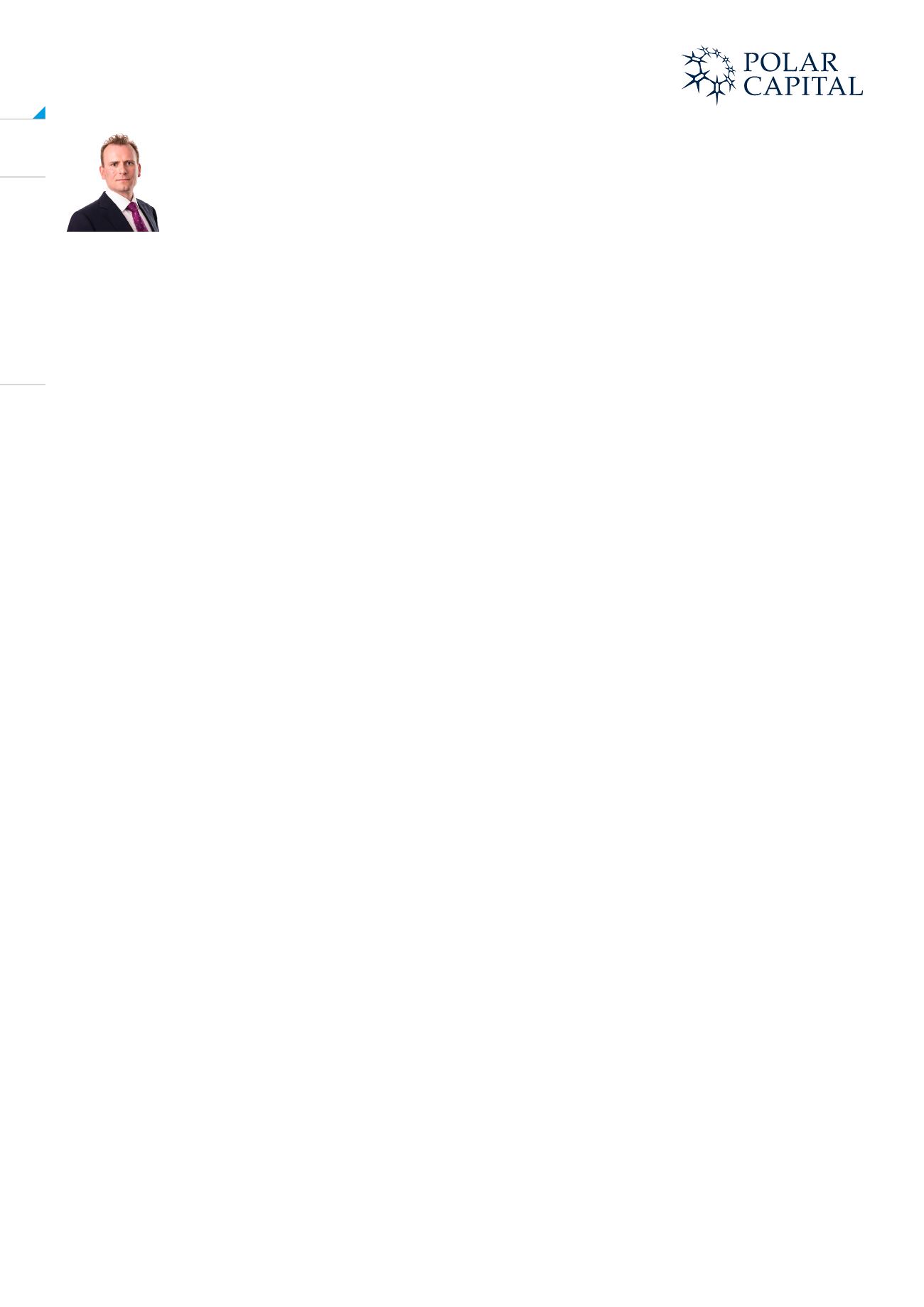
DIY Investor Magazine
|
June 2017
22
HEALTHCARE TRANSFORMATION CREATES
NEW OPPORTUNITIES
Daniel Mahony, PhD
Fund Manager, Polar Capital Healthcare Team
Everyone cares about their health and the health of
their loved ones. You see it every day in the level of
media interest in the latest medical breakthroughs, more
effective drugs or the pressures on the National Health
Service.
Healthcare is a long-term, secular growth sector as
an older population drives the demand and the need
for increased healthcare provision. Global healthcare
spending was over $7.6 trillion in 2014 and is projected
to grow faster than GDP. The political conundrum is
how to deliver better healthcare to more people for less
money.
We see the solution emerging; healthcare has begun
the process of major structural change, with information
technology a key driver, finally disrupting 20
th
Century
healthcare infrastructure around the world.
Over the next decade, we expect a revolution in the
way our health is managed, delivered and paid for. As
a result, the competitive structure of the healthcare
industry is already changing but many investors seem
unaware of the ramifications.
There will be winners and losers in the sector, we
think management teams that recognise and adapt
will deliver stable earnings growth and compounding
returns for investors. Importantly, there are really exciting
investment opportunities that extend well beyond some
of the more familiar pharmaceutical companies.
As a team we believe successful companies can be
divided into two categories. Firstly, the consolidators,
large companies that recognise and adapt to change.
Then there are the innovators, smaller companies with
new products, services or business models that drive
disruption in the sector.
Our original investment thesis back in 2010 was that
healthcare stocks were significantly undervalued; the
sector was unloved and under-owned; and that the price
to earnings (P/E) ratio for the sector would return to the
long-term average over the life of the Company. At that
time, investors were pessimistic about the outlook for
the pharmaceutical sector and questioned the ability
of these companies to replace lost revenues from drug
patent expirations in the 2010 to 2015 period and to
grow in the future.
We held a contrarian view based on three key
assumptions. Firstly that the earnings impact from
patent expirations would not be as bad as feared;
emerging markets could provide a source of revenue
growth; and finally too little value had been applied
to R&D pipelines and that the sector could return to
growth.
This investment thesis has now played out and we think
investors now need to focus on the impact of ageing
population on healthcare. The needs and demands of
an ageing population are putting pressure on healthcare
systems around the world – the healthcare costs of a 60
year old are double those of a 40 year old.
In large part, this is because people aged 60 today
expect to be far healthier and more active than their
parents’ generation at the same age. New medical
technology has played a critical role in healthy living
but it comes with a cost. For example, products such
as hip and knee implants and the use of stents for
cardiovascular disease were not as widespread 30
years ago but are now standard procedures in all
developed countries.
The information technology sector has been responsible
for the major disruption of a number of industries over
the last decade but the impact on healthcare has, until
recently, been modest. You can see this starting from
the way we interact with our GP surgery, it is only in the
last couple of years that most people in the UK are now
able to book an appointment online.


